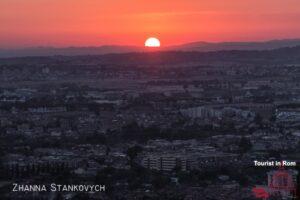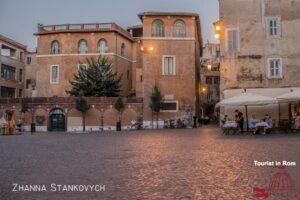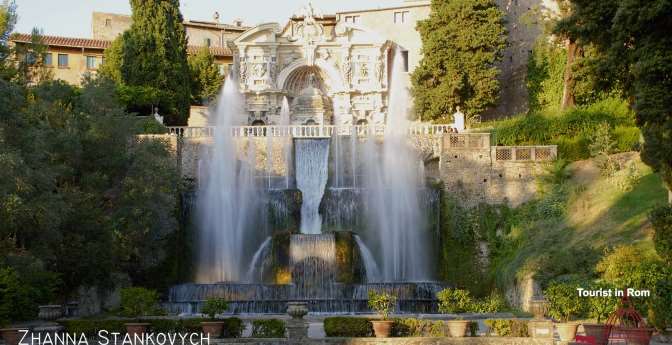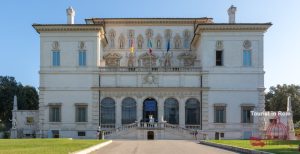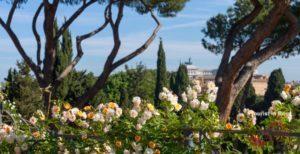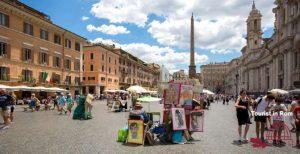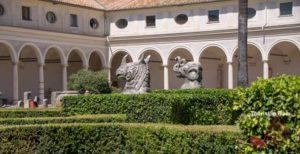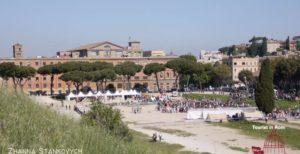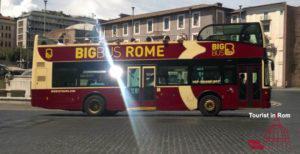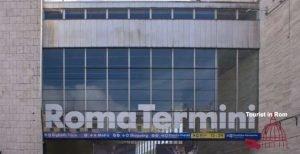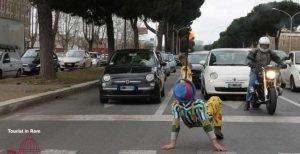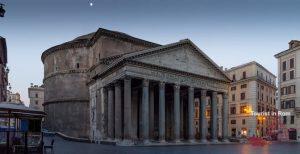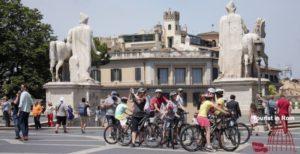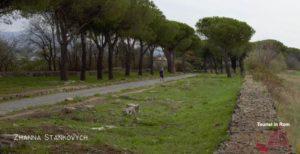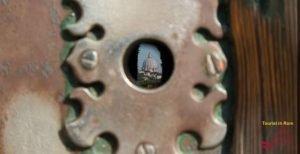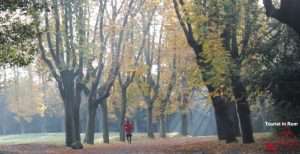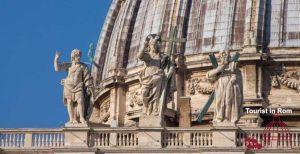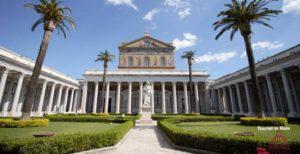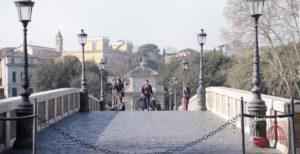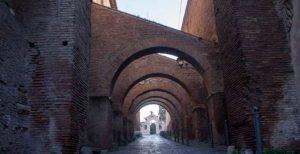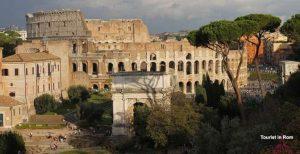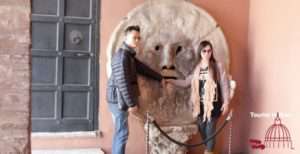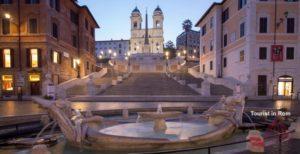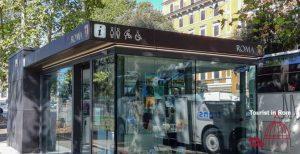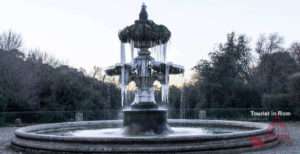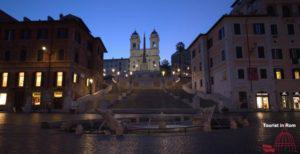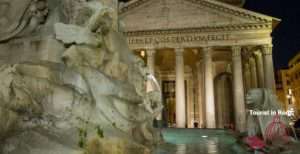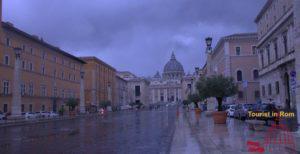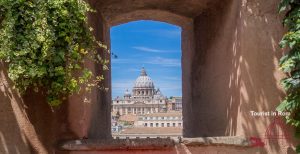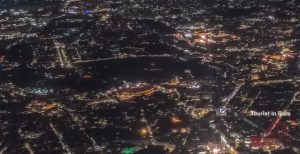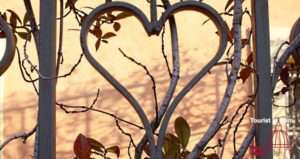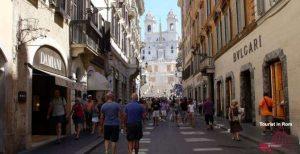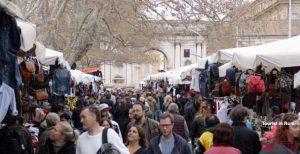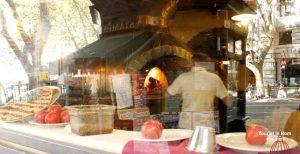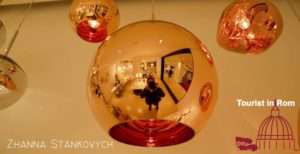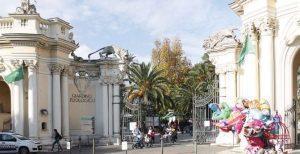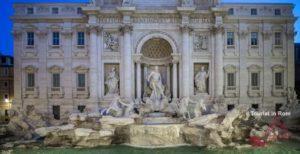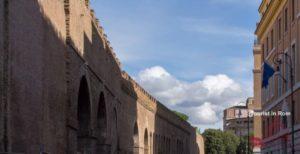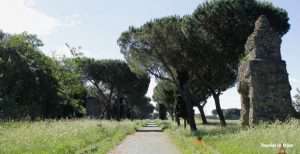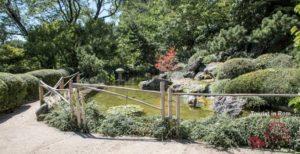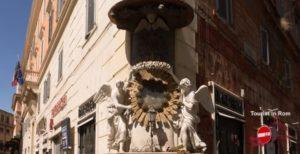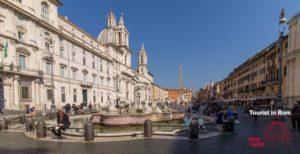Villa d’Este dates back to Cardinal Ippolito II d’Este in the 16th century. He had the idea of setting a garden below his palace, which was built in a former Benedictine monastery.
The lords outscored each other in pomp and ceremony. Due to the proximity to the river Aniene and the great slope, it was possible here to create extensive water features.
Villa and gardens were rebuilt and embellished several times and later became property in Habsburg. Franz Liszt composed his water music here. The Jardin de Tivoli in Paris and the Tivoli in Copenhagen are inspired by Villa d’Este. The villa is a UNESCO World Heritage Site.
Tivoli is about 30 km from Rome.
The Palace of the Villa d’Este
The palace of the villa is embellished with decorations and paintings by a number of 16th century artists. On the level of the entrance from the city is the “Appartamento Nobile”, the noble apartment. From the balcony of the central salon you have a wonderful view over the garden and the Tiber Valley to the Monti Sabatini, the Sabatine mountains in the north of Rome.
Unfortunately, it is often very hazy and therefore you can not see the city of Rome and the sea.
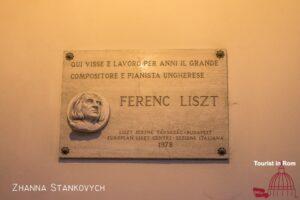

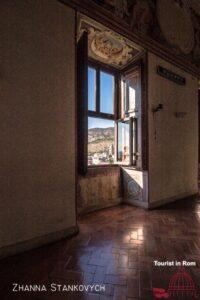
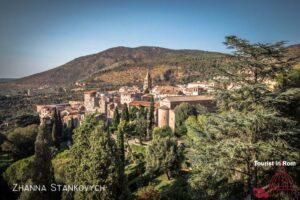
On the lower floor is the “Appartamento Inferiore”, the lower apartment, from where you can descend into the garden.
The garden of Villa d’Este
Most visitors come to the villa to admire the numerous fountains and water games. The water is passed from the River Aniene through an underground canal to the villa that ends at the Ovato Fountain.
The Ovato Fountain, as seen from the villa, is located on the right side of the hundred wells boulevard – the Viale delle cento fontane. It owes its name to its oval half-round shape. It is also called Tivoli Fountain.
If you continue from the Ovato fountain, you will come to the Organ Fountain. The organ plays every two hours starting at 10:30. It sounds a bit like a barrel organ, but it’s an impressive spectacle.
Underneath the organ well are caves and the imposing Neptune Fountain. This fountain creates a constant fresh breeze with its fountains and waterfalls.
Below the Neptune Fountain there are three fish tanks and on the other side the view of the Tiber Valley opens up. In the garden there are more fountains and centuries-old cypress trees.
As you climb up the garden on the other side of the villa, you will see the Rometta fountain at the other end of the hundred wells – also known as the Rome fountain. Here a panorama of ancient Rome wa represented. Today only a few parts have been preserved. On the right side of the fountain, the goddess Rome is enthroned in her armor, and below a ship.
In the center of the villa under the hundred wells way is the dragon well. The dragons spit the water in high fountains.
As you continue up to the villa, you will see the recently restored chalice fountain – la Fontana del Bicchierone above the hundred wells.
Combining Villa Adriana and Villa d’Este
Between Rome and Tivoli, about six kilometers from Tivoli, are the remains of Villa Adriana. It is also a UNESCO World Heritage Site. The Hadrian’s Villa was built in the 2nd century as the summer residence of Emperor Hadrian. It is the largest palace complex ever built for a Roman emperor.
In the complex of Villa Adriana it can be very hot in the summer. We advise you to bring a sunscreen and plenty of water. For us, the best time to visit Villa Adriana is from mid-October to early May.
Tours for Villa D’Este and Villa Adriana
Using public transport, it is a bit difficult to visit Villa D’Este and Villa Adriana in one day. We therefore recommend booking a tour from Rome. Tours for Villa D’Este
Opening hours
The villa is closed on 25th December and 1st January.
Opens 8:45 a.m., 2 p.m. on Mondays and after holidays;
Closes Jan. 29-Feb. 25, 5:45 p.m.; Feb. 26-March 30, 6:45 p.m.; until Sept. 15, 7:45 p.m.; Sept. 16-Oct. 1, 7:15 p.m.; Oct. 2-Oct. 28, 6:45 p.m.; Oct. 29-Jan. 28, 2024, 5:15 p.m.; box office closes 1 hour before.
How to get to Villa d’Este
The entrance to Villa D’Este is at Piazza Trento 5 in Tivoli ![]()
You can reach Villa d’Este with the regional buses of COTRAL.
Departure is in Rome from the metro station of line B Ponte Mammolo in the direction of Tivoli. The journey takes about 50 minutes. You can buy the ticket at the COTRAL ticket counter for round trip. In the bus the ticket costs much more. With the metrebus card you need a ticket for three zones (daily ticket BIRG).
There are also train connections to Tivoli from Termini station and Tiburtina train station. The journey time is approximately one hour. The Tivoli train station is a bit out of the way and the walk to the villa is around 15 minutes.
By car, take Via Tiburtina to Tivoli or take the A24 motorway to the Tivoli exit. You will usually find parking spaces at Piazza Garibaldi.
Photo gallery
Photo gallery Organ Fountain and Neptune Fountain
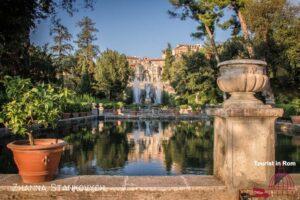
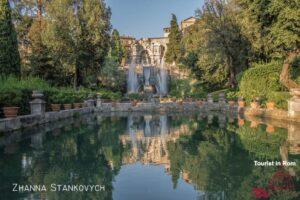
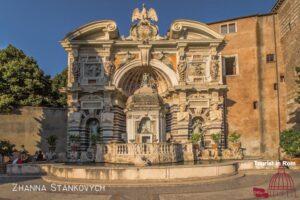
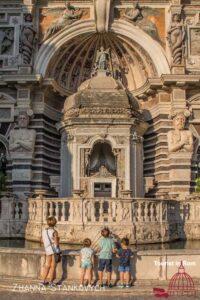
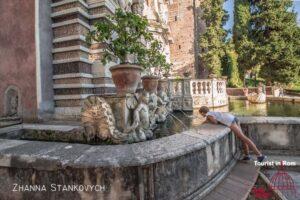
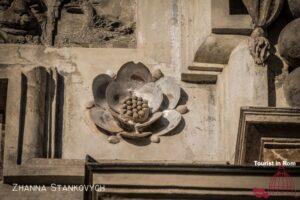
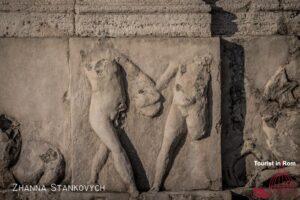
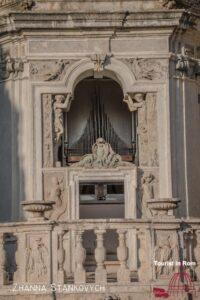
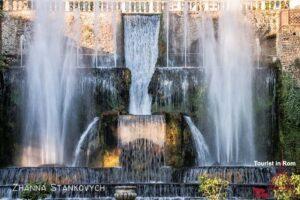
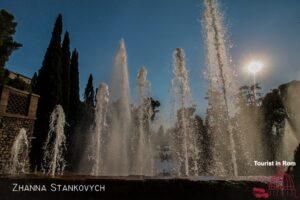
Photo gallery Villa d’Este Garden and Wells
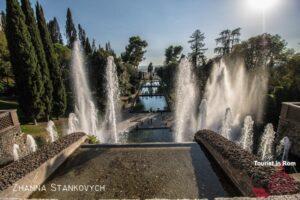
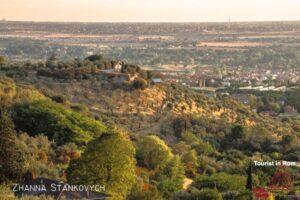
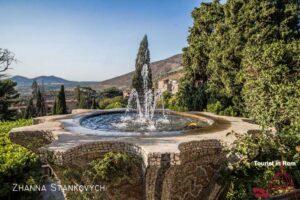
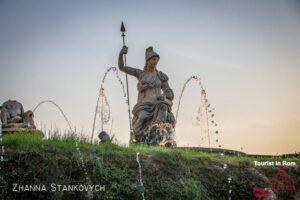
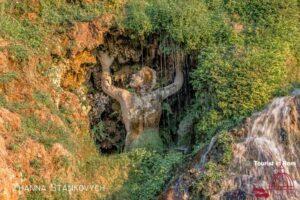
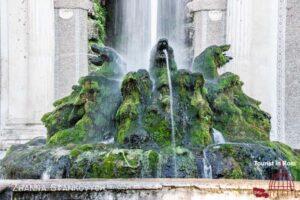
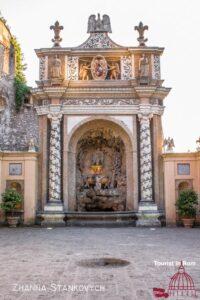
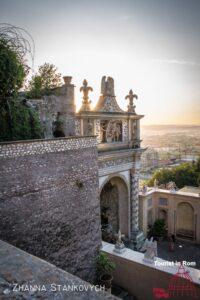
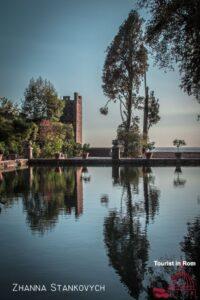
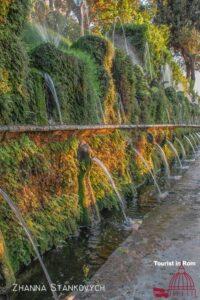
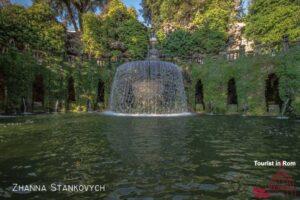
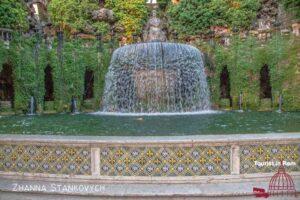
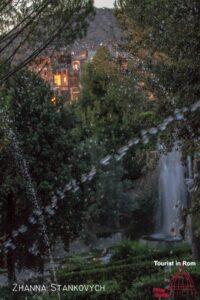

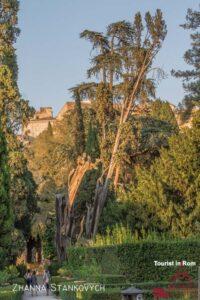
Evening at Villa d’Este

